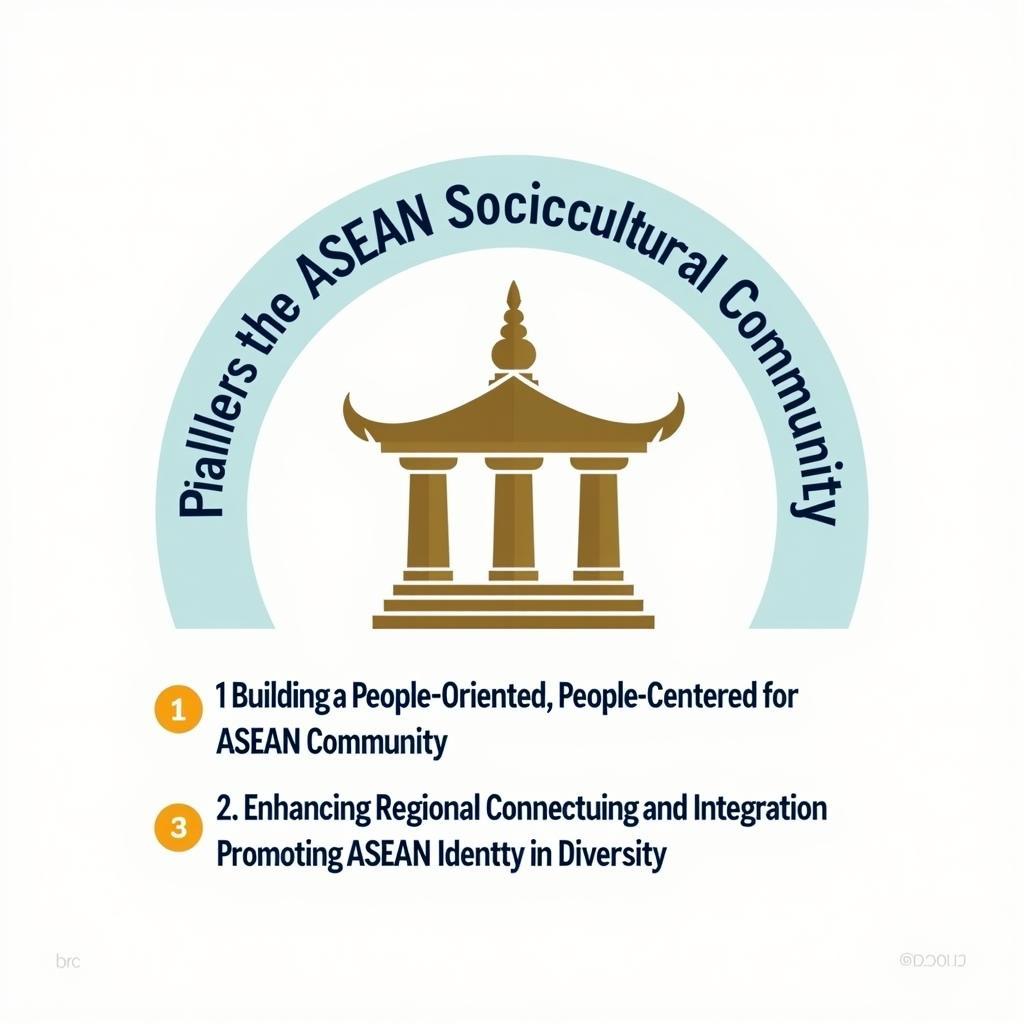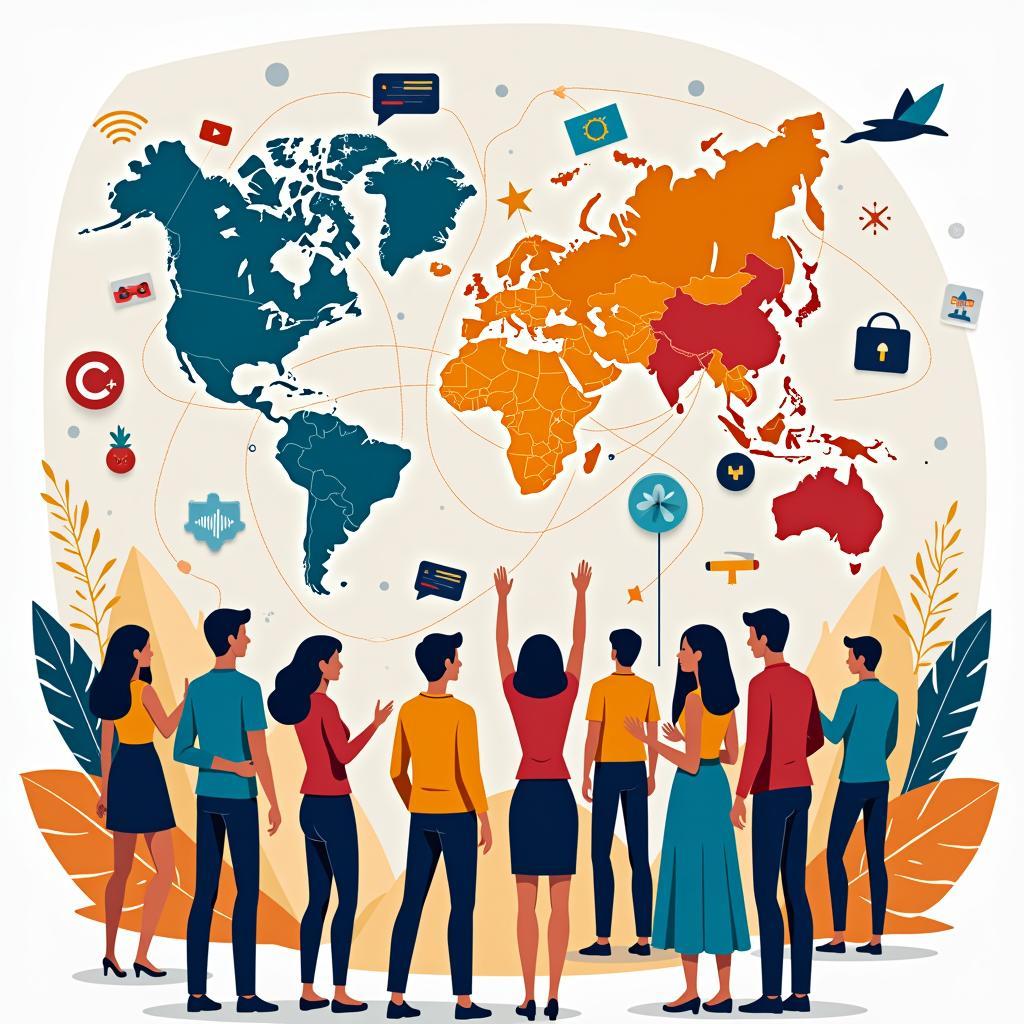The ASEAN Sociocultural Blueprint is a comprehensive roadmap designed to foster a cohesive and vibrant ASEAN Community by addressing social and cultural challenges and opportunities. It is an integral part of the broader ASEAN Community Vision 2025, which aims to build a highly integrated and prosperous region. This blueprint focuses on people-to-people connectivity, promoting cultural understanding, and addressing social issues to improve the lives of ASEAN citizens.
The Pillars of the ASEAN Sociocultural Blueprint
The ASEAN Sociocultural Blueprint stands on three main pillars, each focusing on distinct aspects of regional integration:
-
Building a people-oriented, people-centered ASEAN Community: This pillar emphasizes human development, social protection, and ensuring equitable access to opportunities for all segments of society. It prioritizes initiatives that empower women, youth, children, the elderly, and persons with disabilities.
-
Enhancing regional connectivity and integration: This pillar aims to bridge development gaps within and across ASEAN Member States by promoting inclusive growth and addressing disparities. It also focuses on improving infrastructure, facilitating the movement of people and goods, and fostering digital connectivity.
-
Promoting ASEAN identity and unity in diversity: This pillar emphasizes the rich cultural heritage of the region and promotes cross-cultural understanding and appreciation. It encourages collaborations in education, arts, culture, sports, and tourism to strengthen ASEAN identity and unity.
 ASEAN Sociocultural Community pillars
ASEAN Sociocultural Community pillars
Key Areas of Focus
The ASEAN Sociocultural Blueprint outlines several key areas of focus to achieve its objectives:
-
Education: Enhancing the quality of education and promoting lifelong learning opportunities for all. This includes initiatives to harmonize education systems, facilitate student and teacher mobility, and promote technical and vocational education and training (TVET).
-
Culture: Preserving and promoting ASEAN’s rich cultural heritage through various initiatives, including cultural exchanges, festivals, and collaborations in the creative industries.
-
Health: Strengthening healthcare systems, improving access to quality and affordable healthcare, and addressing common health challenges such as infectious diseases and non-communicable diseases.
-
Social Welfare and Development: Promoting social protection programs, enhancing social safety nets, and empowering vulnerable groups, including women, children, the elderly, and persons with disabilities.
-
Environment and Sustainable Development: Promoting environmental protection and sustainable development initiatives to address issues such as climate change, biodiversity loss, and pollution.
-
Disaster Management: Strengthening regional cooperation in disaster preparedness, response, and recovery to mitigate the impact of natural disasters.
 ASEAN nations collaborating on sociocultural initiatives
ASEAN nations collaborating on sociocultural initiatives
Impact and Achievements
The ASEAN Sociocultural Blueprint has contributed significantly to regional integration and the well-being of ASEAN citizens. Some notable achievements include:
-
Increased student and academic mobility: The ASEAN scholarships and exchange programs have provided opportunities for thousands of students and academics to pursue higher education and research collaborations within the region.
-
Strengthened cultural exchanges: ASEAN cultural festivals, art exhibitions, and film screenings have promoted greater appreciation and understanding of the region’s diverse cultures.
-
Improved healthcare outcomes: Regional collaborations in healthcare have led to advancements in disease surveillance, prevention, and treatment, contributing to improved health outcomes for ASEAN citizens.
-
Enhanced disaster response mechanisms: The establishment of the ASEAN Coordinating Centre for Humanitarian Assistance on disaster management (AHA Centre) has strengthened regional coordination and capacity in disaster response.
Challenges and Opportunities
Despite significant progress, the implementation of the ASEAN Sociocultural Blueprint faces some challenges:
-
Resource constraints: Securing adequate funding and resources for implementing the various programs and initiatives remains a challenge.
-
Implementation gaps: Translating regional commitments into concrete national actions and ensuring effective implementation across all Member States remains crucial.
-
Emerging challenges: The COVID-19 pandemic has highlighted the need for greater regional cooperation in addressing health emergencies and mitigating their socio-economic impacts.
However, these challenges also present opportunities for ASEAN to further strengthen its sociocultural integration:
-
Leveraging digital technology: Utilizing digital platforms and technologies can enhance the reach and effectiveness of sociocultural programs and initiatives.
-
Strengthening public-private partnerships: Engaging the private sector and civil society organizations can leverage additional resources and expertise to support the implementation of the Blueprint.
-
Promoting youth leadership: Empowering young people to actively participate in shaping the future of the ASEAN Community will be crucial for achieving the goals of the Sociocultural Blueprint.
 Looking towards the future of ASEAN sociocultural integration
Looking towards the future of ASEAN sociocultural integration
Conclusion
The ASEAN Sociocultural Blueprint plays a vital role in realizing the vision of a people-oriented and people-centered ASEAN Community. By addressing social and cultural challenges and harnessing the region’s rich diversity, the Blueprint paves the way for a more integrated, harmonious, and prosperous ASEAN.
FAQ
1. What is the significance of the ASEAN Sociocultural Community Blueprint?
The Blueprint is crucial for promoting people-to-people connectivity, cultural understanding, and addressing social issues to improve the lives of ASEAN citizens. It’s a roadmap for a cohesive and vibrant ASEAN Community.
2. How does the Blueprint contribute to ASEAN identity?
It emphasizes the region’s rich cultural heritage and promotes cross-cultural understanding. Initiatives like cultural exchanges, festivals, and educational collaborations strengthen ASEAN identity and unity in diversity.
3. What are some key achievements of the Blueprint?
The Blueprint has led to increased student mobility, strengthened cultural exchanges, improved healthcare outcomes, and enhanced disaster response mechanisms within ASEAN.
4. What are the main challenges in implementing the Blueprint?
Resource constraints, implementation gaps between regional commitments and national actions, and addressing emerging challenges like pandemics require ongoing attention.
5. How can I learn more about the ASEAN Sociocultural Blueprint?
You can find more information on the official ASEAN website and explore resources from ASEAN sectoral bodies like the ASEAN Secretariat and the ASEAN Foundation.
For further information and assistance regarding the ASEAN Sociocultural Blueprint or other ASEAN-related inquiries, please don’t hesitate to contact us:
Phone: +84 369020373
Email: [email protected]
Address: Thon Ngoc Lien, Hiep Hoa, Bac Giang, Vietnam
Our dedicated customer support team is available 24/7 to assist you.